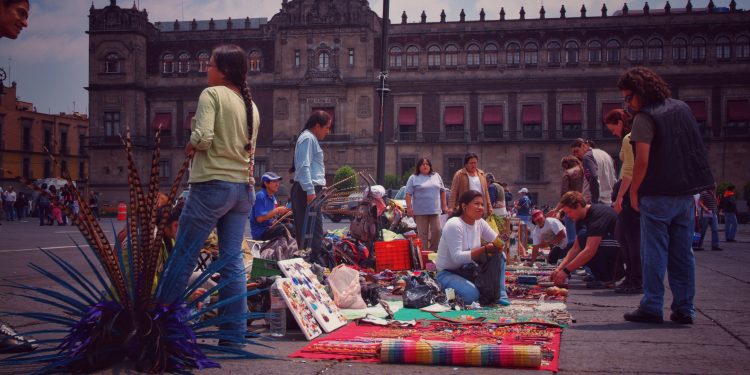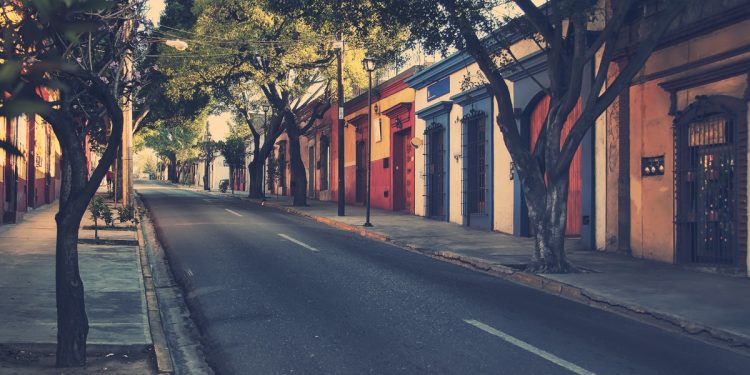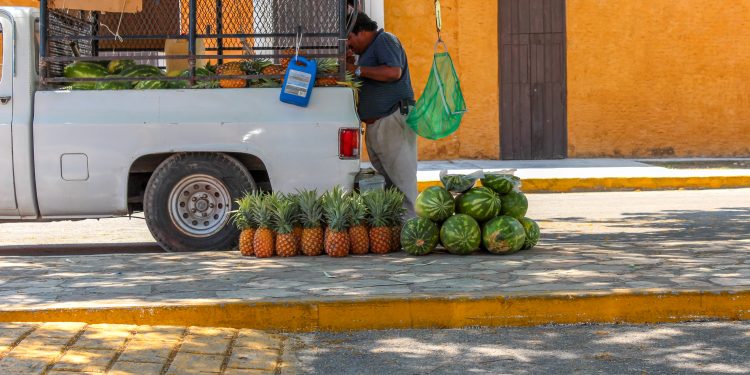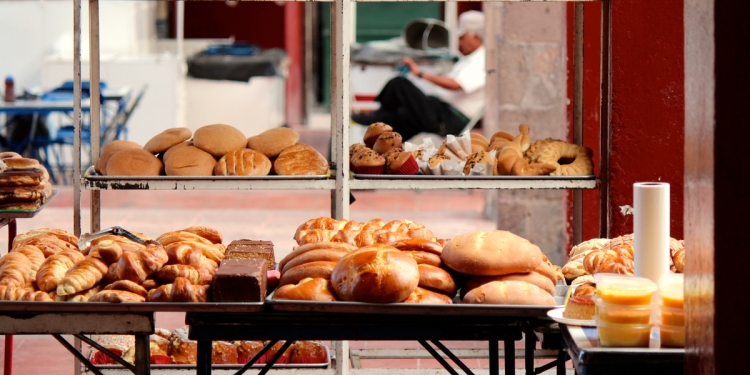A common opinion heard in Mexico is that something ought to be done about the hordes of street vendors who line the sidewalks of the capital, cluttering the entrances to Metro stations, and blocking access to stores, offices and other buildings.
Veritable armies of vendedores ambulantes make up a fairly large part of what is known as Mexico’s “informal economy.” Chambers of commerce don’t like them, because they get in the way of established business, while the government is somewhat in two minds.
It might be a nuisance, but this informal commerce provides work and keeps the unemployment rate from reaching what would otherwise be uncomfortable levels. Every few years or so, the city government takes some measures to alleviate the problem —mostly through programs to relocate the vendors to established market spaces— but the vendors always come back, like a relentless tide.
This informal commerce is extremely adaptable: at the first drop of rain, umbrellas appear on sale as you leave the Metro; at the first cold snap of winter, coats, gloves and scarves; agendas and calendars in January; flags and banners before Independence Day.
“This city has many plazas, where there are continuous markets and dealings in buying and selling. It has another plaza twice the size of the city of Salamanca, walled around with great porches, where daily there are more than sixty thousand souls buying and selling; where there is every kind of merchandise that can be found in any land.”
This description might not sound strange to the modern-day visitor who takes a stroll downtown in the country’s capital. The letter, written in October 1520 by the Spanish conquistador Hernán Cortés to Emperor Carlos V, dedicates the next several pages to describing the goods —those he could remember— on sale in Tenochtitlán, as the city was then called. Summarized for blogs, there was “everything from food and jewelry, to live animals, herbal medicine and earthenware.”
The point is, perhaps, that it will take more than a desire for modernity to do away with five hundred years of tradition.
Mexico in your inbox
Our free newsletter about Mexico brings you a monthly round-up of recently published stories and opportunities, as well as gems from our archives.








Dear Sirs,
I love your newsletter! I particularly liked this article about Mexican commerce (and entrepreneurship). While you make the comment that this Mexican practice of the Tianguis (open markets) goes back 500 years, I would argue that it goes back perhaps a thousand years (if not more). The account you quote (similar to the one described in Bernal diaz del Castillo’s “True Hisotory of the Spanish Conquest”) only considers the years from the time the Spaniards documented what they saw. However, as Bernard del Castillo recounts, not only were the markets in Tenochtitlán massive with every ware one can imagine, but they were extremely well organized with market arbriters on hand to settle merchant disputes. Something like this (at this size, scale and level of complexity) doesn’t develop overnight. What the Spanish witnessed was something that had long existed many, many years before their arrival.